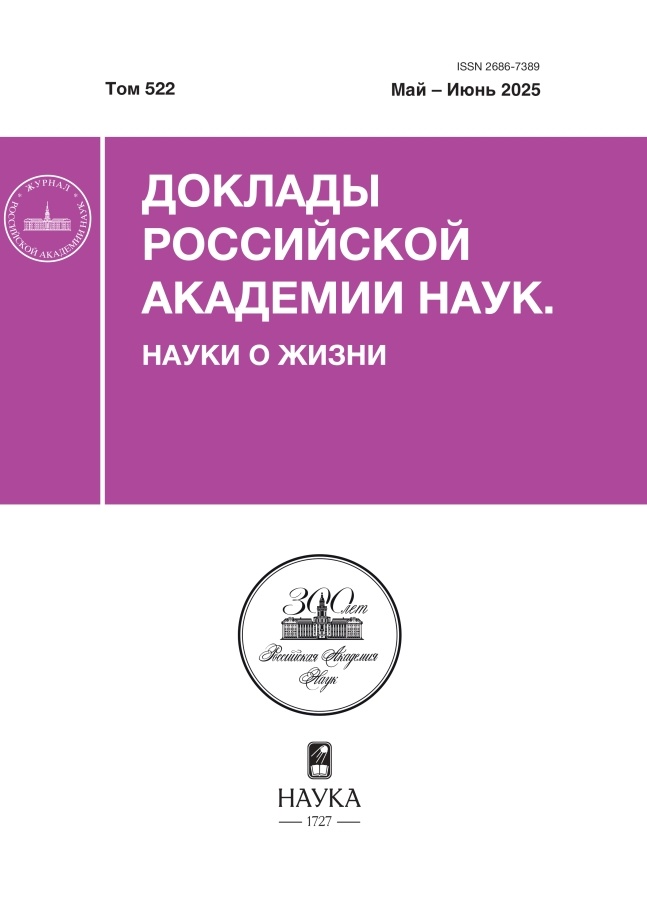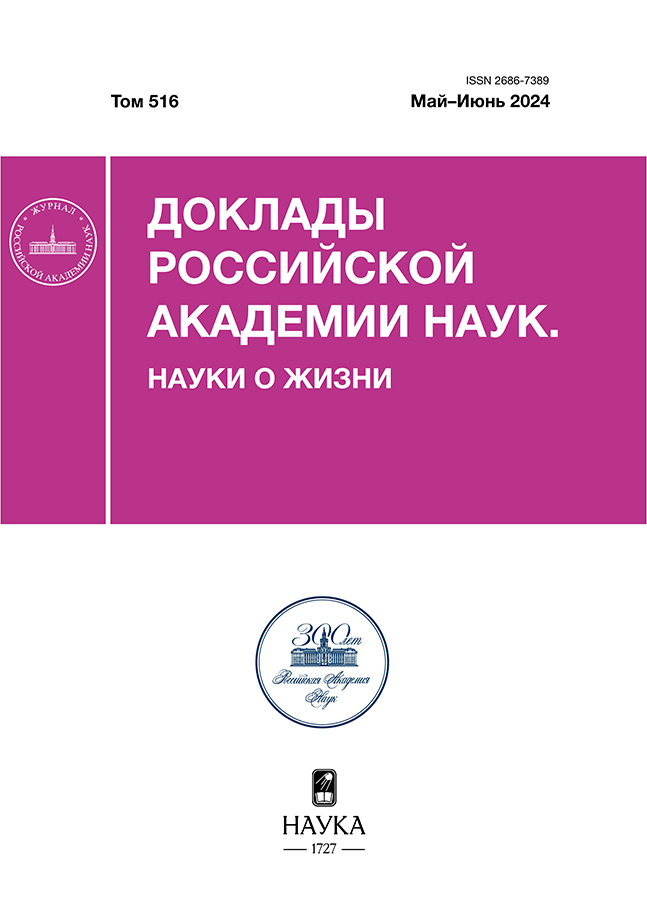Гибридные белки, содержащие антигенный эпитоп и тиоредоксин для in vitro стимуляции CD4+ TCR+ Jurkat Т-клеток
- Авторы: Ишина И.А.1, Захарова М.Ю.1, Курбацкая И.Н.1, Мамедов А.Э.1, Белогуров А.А.1,2, Рубцов Ю.П.1, Габибов А.Г.1,3,4
-
Учреждения:
- Институт биоорганической химии им. академиков М.М. Шемякина и Ю.А. Овчинникова Российской академии наук
- Московский государственный медико-стоматологический университет им. А.И. Евдокимова
- Национальный исследовательский университет “Высшая школа экономики”
- Московский государственный университет им. М.В. Ломоносова
- Выпуск: Том 516, № 1 (2024)
- Страницы: 64-68
- Раздел: Статьи
- URL: https://permmedjournal.ru/2686-7389/article/view/651432
- DOI: https://doi.org/10.31857/S2686738924030119
- EDN: https://elibrary.ru/VTFRUM
- ID: 651432
Цитировать
Полный текст
Аннотация
Исследование CD4+ Т-клеточного ответа, а также специфичности Т-клеточных рецепторов (TCR) имеет ключевое значение для изучения этиологии иммунных заболеваний и разработки их целевой терапии. Растворимость, доступность и стабильность синтетических антигенных пептидов, используемых при оценке специфичности Т-клеток, имеют критическую важность. В данной работе мы используем репортерную систему активации Т-клеток с использованием рекомбинантных белков, содержащих антигенные эпитопы, слитые с бактериальным тиоредоксином (trx-пептидами), полученных с помощью бактериальной экспрессии. Совместная инкубация CD4+ HA1.7 TCR+ репортерных клеток Jurkat 76 TRP с CD80+ HLA-DRB1*01:01+ клетками HeLa или CD4+ Ob.1A12 TCR+ Jurkat 76 TRP с CD80+ HLA-DRB1*15:01+ клетками HeLa приводит к активации Jurkat 76 TPR при добавлении trx-пептидов, содержащих TCR-специфичные эпитопы. Trx-пептиды проявили сопоставимый потенциал активации Jurkat 76 TPR в сравнении с синтетическими пептидами. Полученные данные демонстрируют, что тиоредоксин (trx) в качестве белка-носителя оказывает минимальное влияние на распознавание TCR и последующую активацию Т-клеток. Наши результаты подчеркивают потенциальную возможность использования trx-пептидов в качестве реагента для оценки иммуногенности антигенных фрагментов.
Ключевые слова
Полный текст
Об авторах
И. А. Ишина
Институт биоорганической химии им. академиков М.М. Шемякина и Ю.А. Овчинникова Российской академии наук
Автор, ответственный за переписку.
Email: ishina.irina.a@gmail.com
Россия, Москва
М. Ю. Захарова
Институт биоорганической химии им. академиков М.М. Шемякина и Ю.А. Овчинникова Российской академии наук
Email: mariya.zakharova333@gmail.com
Россия, Москва
И. Н. Курбацкая
Институт биоорганической химии им. академиков М.М. Шемякина и Ю.А. Овчинникова Российской академии наук
Email: ishina.irina.a@gmail.com
Россия, Москва
А. Э. Мамедов
Институт биоорганической химии им. академиков М.М. Шемякина и Ю.А. Овчинникова Российской академии наук
Email: ishina.irina.a@gmail.com
Россия, Москва
А. А. Белогуров
Институт биоорганической химии им. академиков М.М. Шемякина и Ю.А. Овчинникова Российской академии наук; Московский государственный медико-стоматологический университет им. А.И. Евдокимова
Email: ishina.irina.a@gmail.com
Department of Biological Chemistry
Россия, Москва; МоскваЮ. П. Рубцов
Институт биоорганической химии им. академиков М.М. Шемякина и Ю.А. Овчинникова Российской академии наук
Email: ishina.irina.a@gmail.com
Россия, Москва
А. Г. Габибов
Институт биоорганической химии им. академиков М.М. Шемякина и Ю.А. Овчинникова Российской академии наук; Национальный исследовательский университет “Высшая школа экономики”; Московский государственный университет им. М.В. Ломоносова
Email: ishina.irina.a@gmail.com
академик РАН
Россия, Москва; Москва; МоскваСписок литературы
- Pishesha N., Harmand T.J., Ploegh H.L. A Guide to Antigen Processing and Presentation // Nat. Rev. Immunol. 2022. V. 22. P. 751–764.
- Santambrogio L. Molecular Determinants Regulating the Plasticity of the MHC Class II Immunopeptidome // Front. Immunol. 2022. V. 13.
- Ishina I.A., Zakharova M.Y., Kurbatskaia I.N., et al. MHC Class II Presentation in Autoimmunity // Cells. 2023. V. 12.
- Chen B., Khodadoust M.S., Olsson N., et al. Predicting HLA Class II Antigen Presentation through Integrated Deep Learning // Nat. Biotechnol. 2019. V. 37. P. 1332–1343.
- Racle J., Guillaume P., Schmidt J., et al. Machine Learning Predictions of MHC-II Specificities Reveal Alternative Binding Mode of Class II Epitopes // Immunity. 2023. V. 56. P. 1359–1375.
- Butler M.O., Ansén S., Tanaka M., et al. A Panel of Human Cell-based Artificial APC Enables the Expansion of Long-lived Antigen-specific CD4+ T Cells Restricted by Prevalent HLA-DR Alleles // Int. Immunol. 2010. V. 22. P. 863– 873.
- Garnier A., Hamieh M., Drouet A., et al. Artificial Antigen-presenting Cells Expressing HLA Class II Molecules as an Effective Tool for Amplifying Human Specific Memory CD4+ T Cells // Immunol. Cell. Biol. 2016. V. 94. P. 662–672.
- Ishina I.A., Kurbatskaia I.N., Mamedov A.E., et al. Genetically Engineered CD80–pMHC-harboring Extracellular Vesicles for Antigen-specific CD4+ T-cell Engagement // Front. Bioeng. Biotechnol. 2024. V. 11.
- Rosskopf S., Leitner J., Paster W., et al. A Jurkat 76 Based Triple Parameter Reporter System to Evaluate TCR Functions and Adoptive T Cell Strategies // Oncotarget. 2018. V. 9. 17608.
- Hennecke J., Carfi A., Wiley D. C. Structure of a Covalently Stabilized Complex of a Human αβ T-cell Receptor, Influenza HA Peptide and MHC Class II Molecule, HLA-DR1 // EMBO J. 2000. V. 19. P. 5611–5624.
- Hahn M., Nicholson M.J., Pyrdol J., Wucherpfennig K.W. Unconventional Topology of Self Peptide–Major Histocompatibility Complex Binding by a Human Autoimmune T Cell Receptor // Nat. Immunol. 2005. V. 6. P. 490–496.
- Belogurov A.A., Kurkova I.N., Friboulet A., et al. Recognition and Degradation of Myelin Basic Protein Peptides by Serum Autoantibodies: Novel Biomarker for Multiple Sclerosis // The Journal of Immunology. 2008. V. 180. P. 1258–1267.
- Mamedov A., Vorobyeva N., Filimonova I., et al. Protective Allele for Multiple Sclerosis HLA-DRB1*01:01 Provides Kinetic Discrimination of Myelin and Exogenous Antigenic Peptides // Front. Immunol. 2020. V. 10.
- Álvaro-Benito M., Freund C. Revisiting Nonclassical HLA II Functions in Antigen Presentation: Peptide Editing and Its Modulation // HLA. 2020. V. 96. P. 415–429.
Дополнительные файлы














